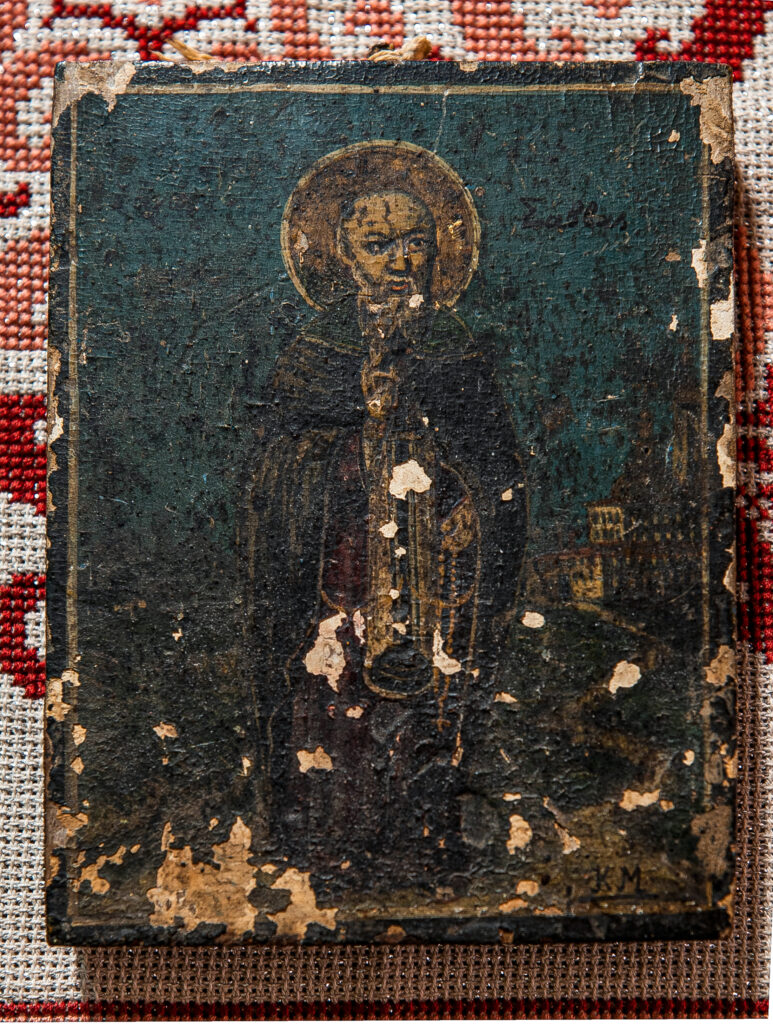
Savvas Leptourgidis, a retired journalist, was born in 1948 in the American Women’s Hospital in Kokkinia and grew up in Keratsini, in the refugee neighbourhood of Amfiali, where he still lives. This icon of Agios Savvas is not only a part of his own and his family’s past, but also a piece of his homeland’s culture.

Refugees from Alikarnassos in Asia Minor arrived at Heraklion in Crete and founded the settlement of Nea Alikarnassos. There are two churches serving the needs of the community, Agios Nikolaos and Panagia Kamariani, built later. The church of Agios Nikolaos was founded by the refugees soon after their arrival and it was originally a wooden construction.
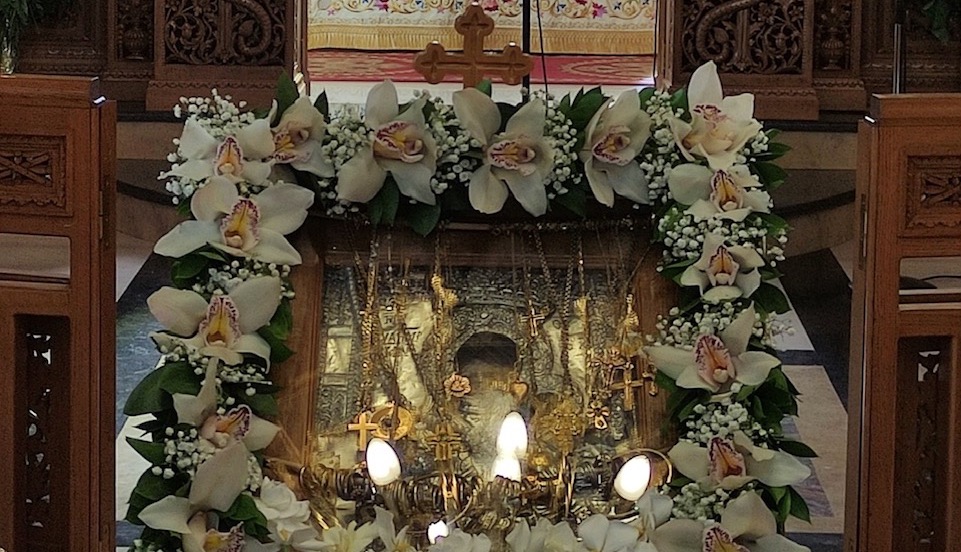
After the burning of Smyrna, the icon of Panagia Kamariani travelled from Asia Minor to Kalymnos with Marigitsa Takori, a refugee. Later, her children transported it to Athens where it was collected by a group of Nea Alikarnassos residents who took it to Heraklion.
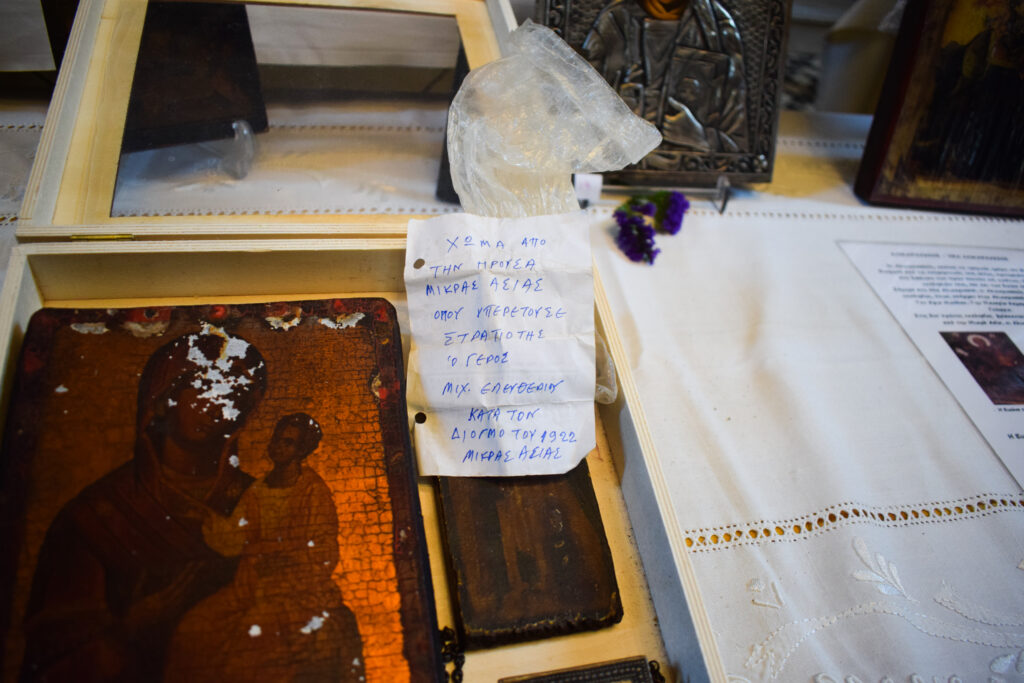
The small display contains an icon of the Virgin Mary, a pouch filled with soil and a note. This is a recent find by Michalis Kokkinos, a third-generation Asia Minor refugee, whose mother died in 2021.
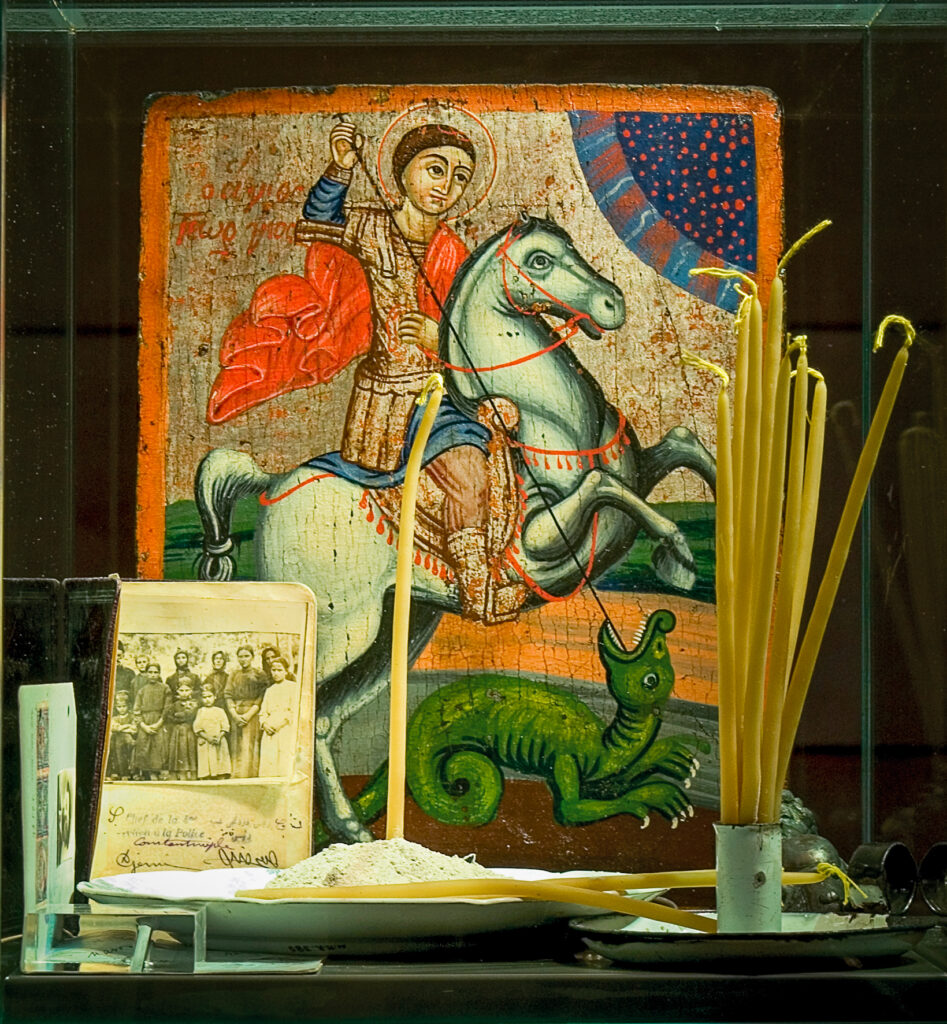
The Museum of the Pontian Women’s Association, called ‘Embroidering memory’, was inaugurated in 2005. Several of the objects in its collection came from Pontus and Russia, traversing space and time. Among them, an icon of Agios Georgios from the 19th century.
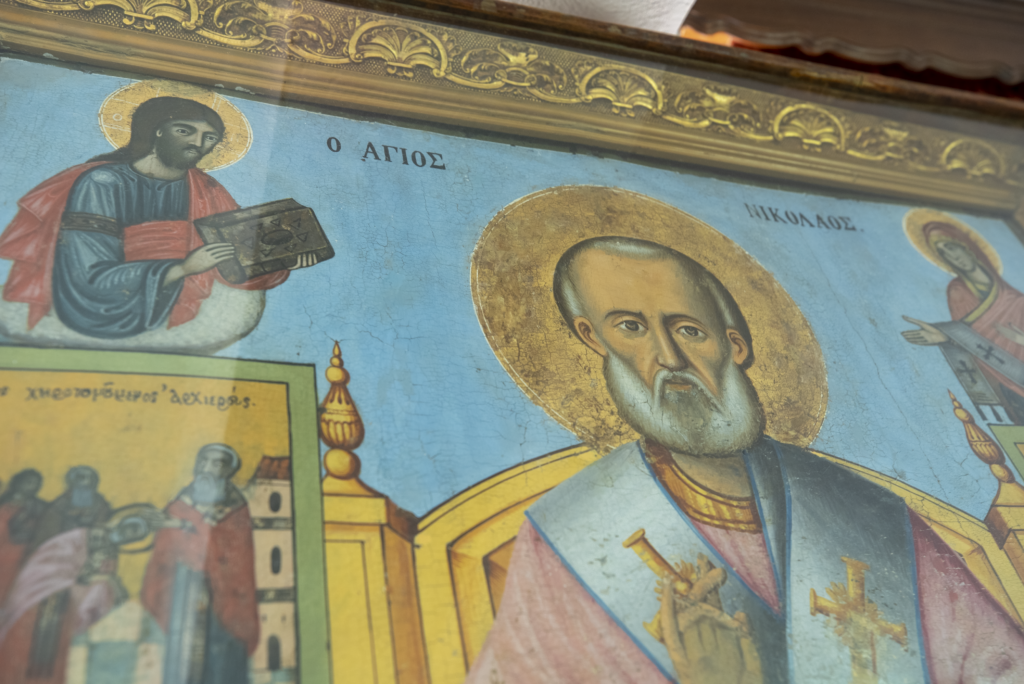
The icon of Agios Nikolaos dominates the small museum of the ‘Nea Sinasos’ Association. Agios Nikolaos was the patron saint of Sinasos, a saint traditionally associated with the sea who found himself on the plateaus of Cappadocia protecting the people of Sinasos who were always on the move.
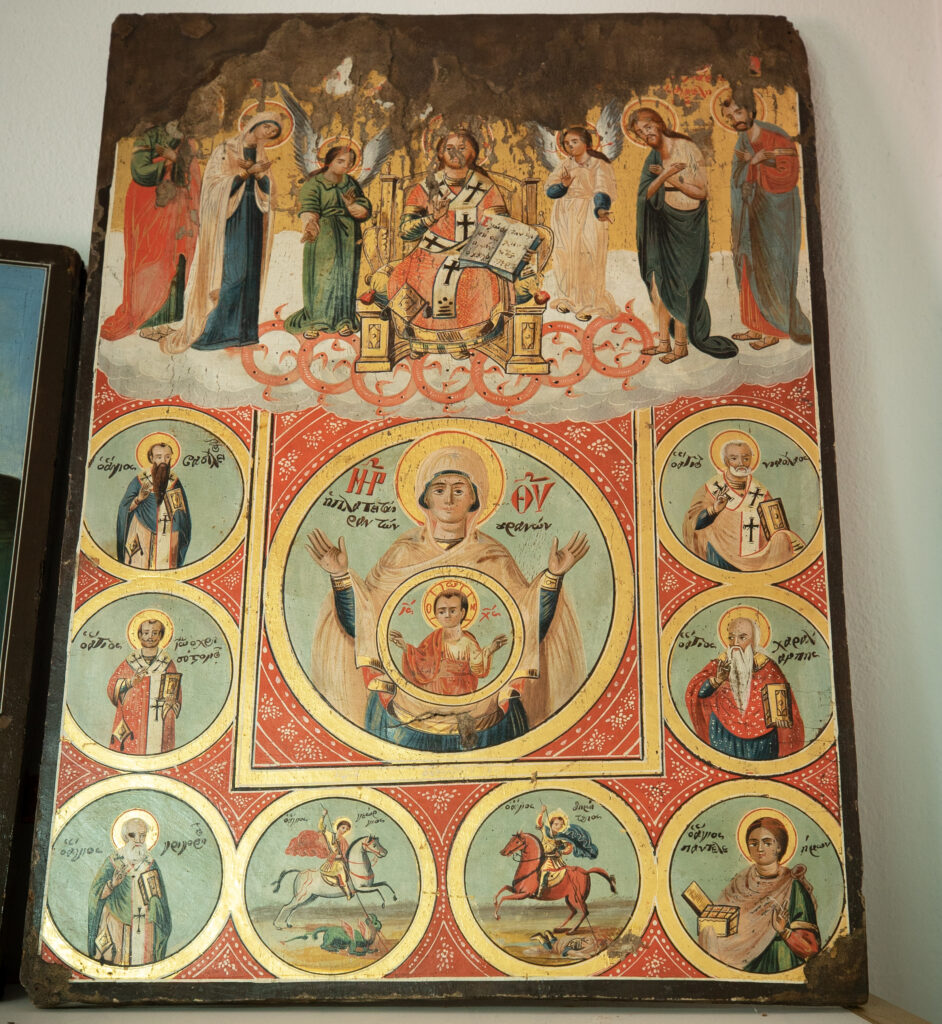
One of the icons donated to the museum of the ‘Nea Sinasos’ Association is an icon depicting Our Lady of the Sign (Virgin Mary with her hands upraised in prayer).
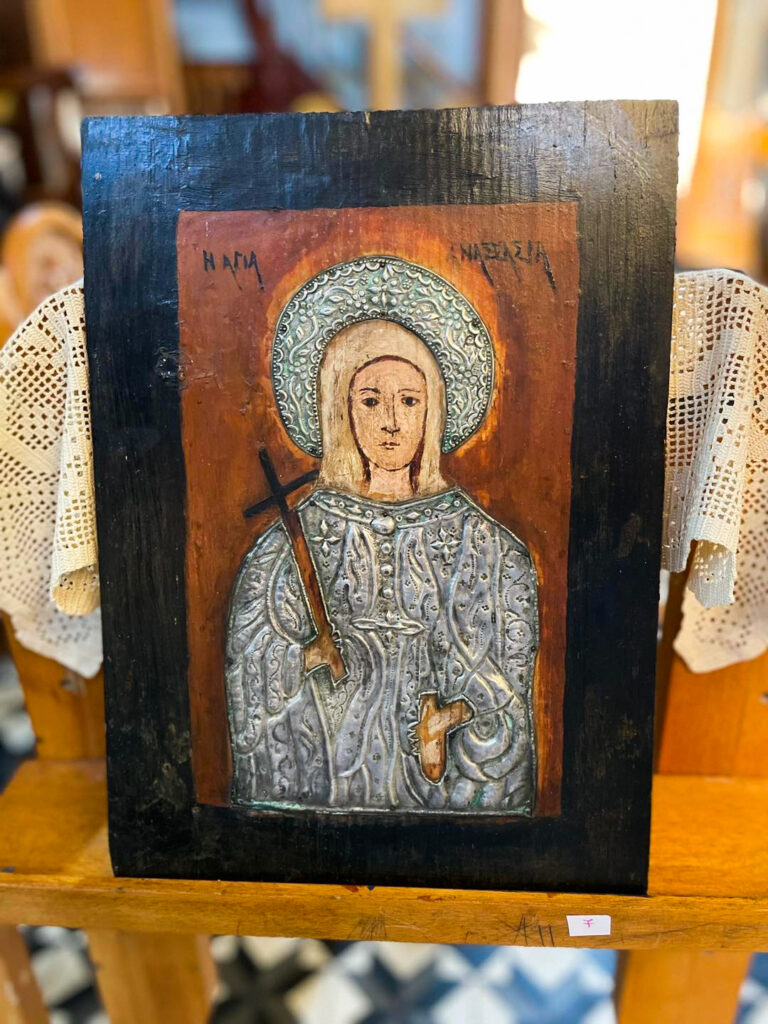
The icon of Agia Anastasia is an heirloom of the refugee family of Nikos Dimopoulos who is the president of the ‘Agios Polykarpos’ Refugee Association in Heraklion. On his mother’s side, Nikos Dimopoulos’ family left Vourla, near Smyrna, and settled in Heraklion.
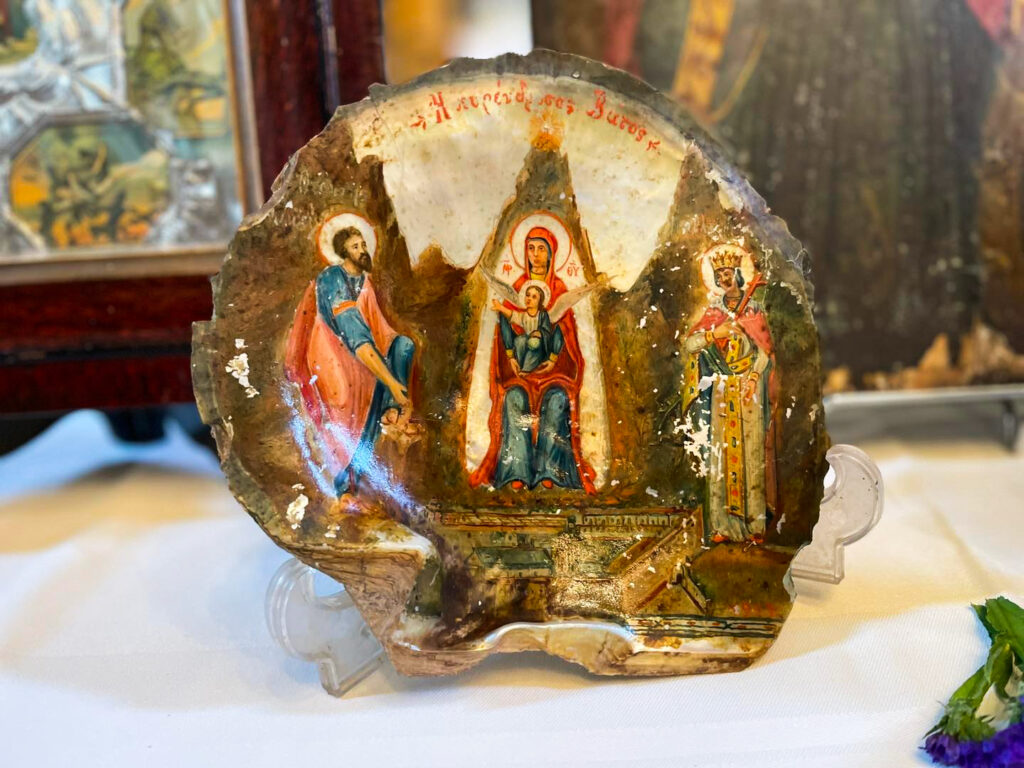
On her father’s side, Gogo Rakopoulou hails from Prousa, while on her mother’s side, her ancestors were originally from Smyrna. Their original surname is not known, since they adopted the surname ‘Tsichlakis’ upon their arrival in Chania. These four icons travelled with them and, after the family had settled in Greece, they adorned their homes and, later, their descendants’ homes.
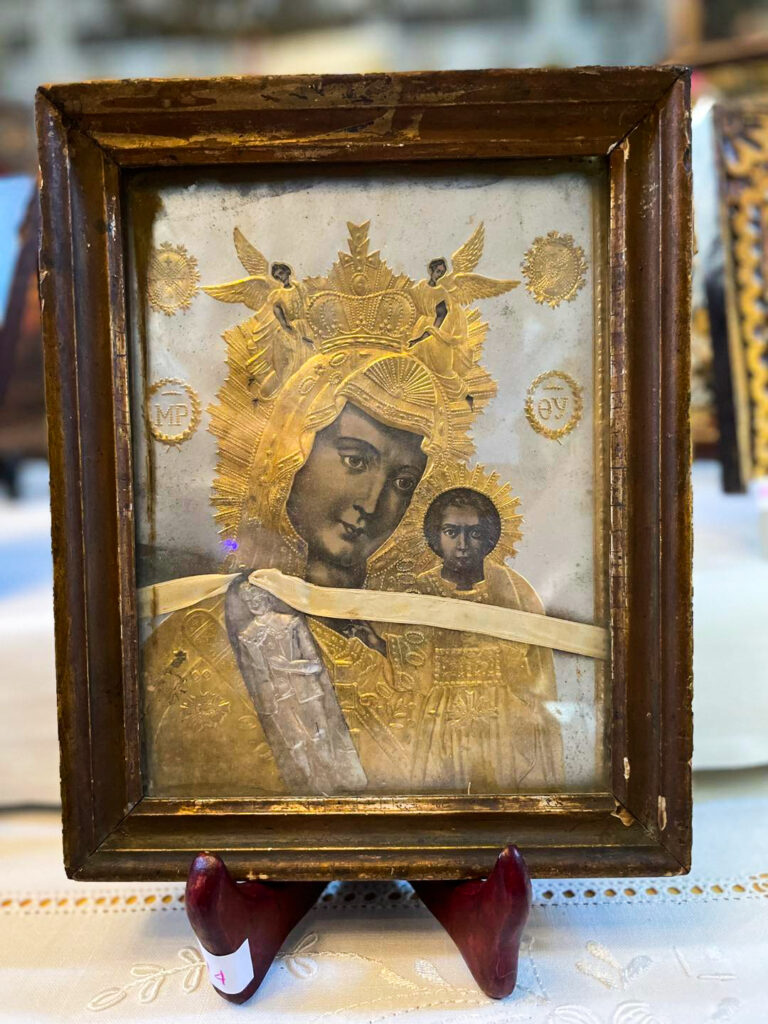
Gogo Rakopoulou describes how, when she took the icons out to clean them, she noticed that some of them had writing on them. As she says, one of the icons was probably her family’s diary.









